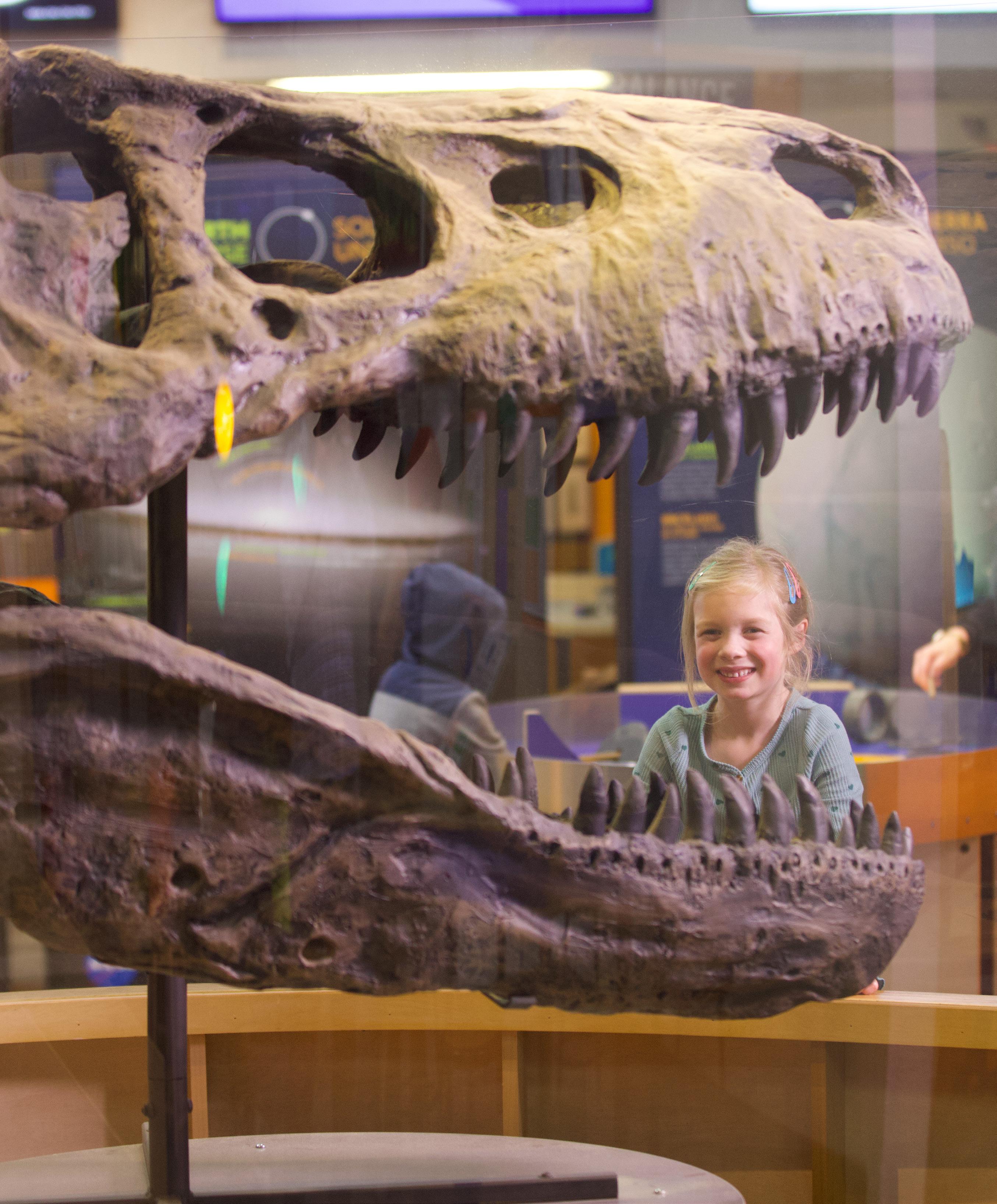


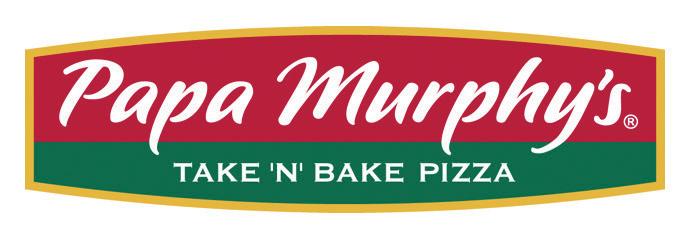

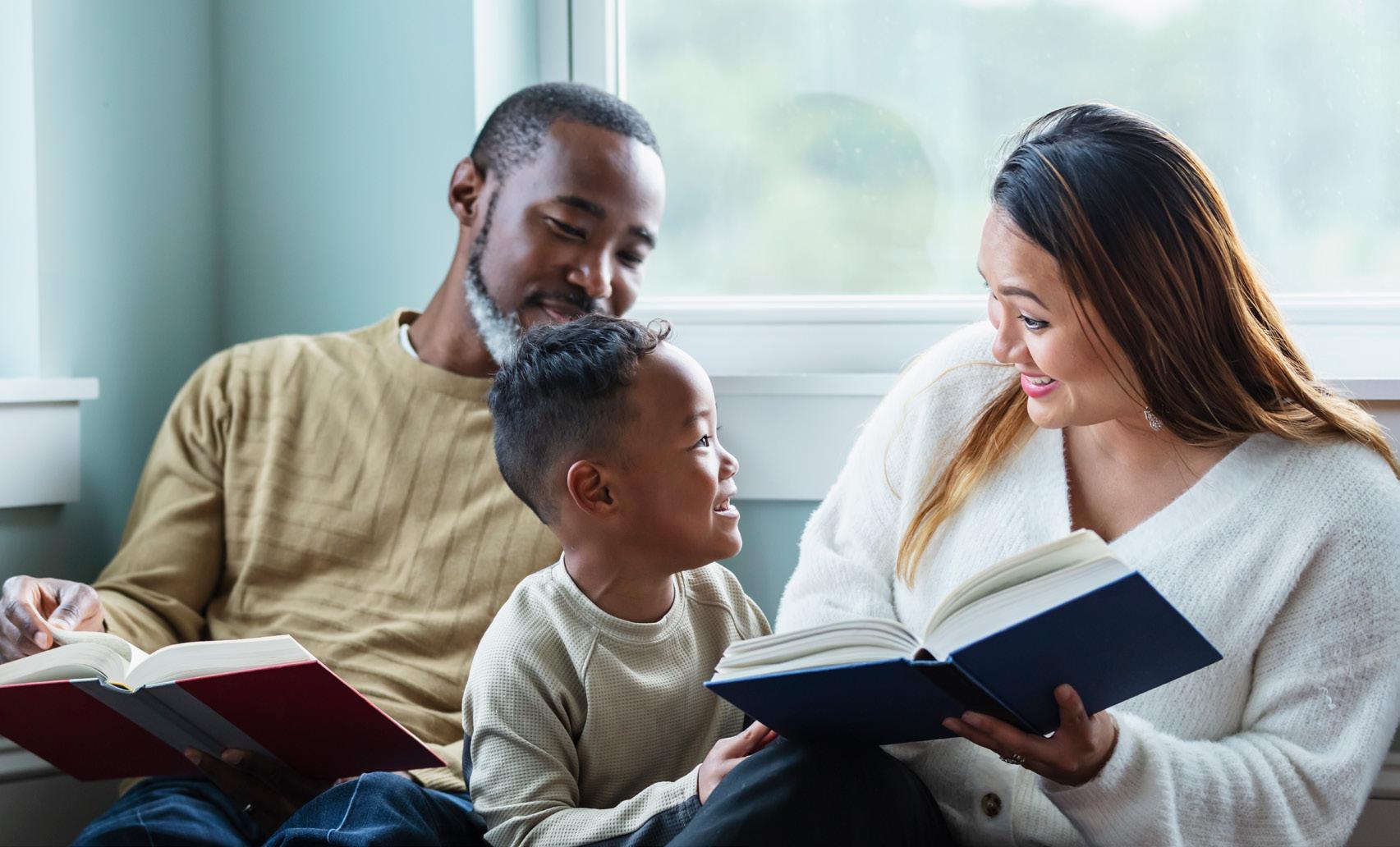
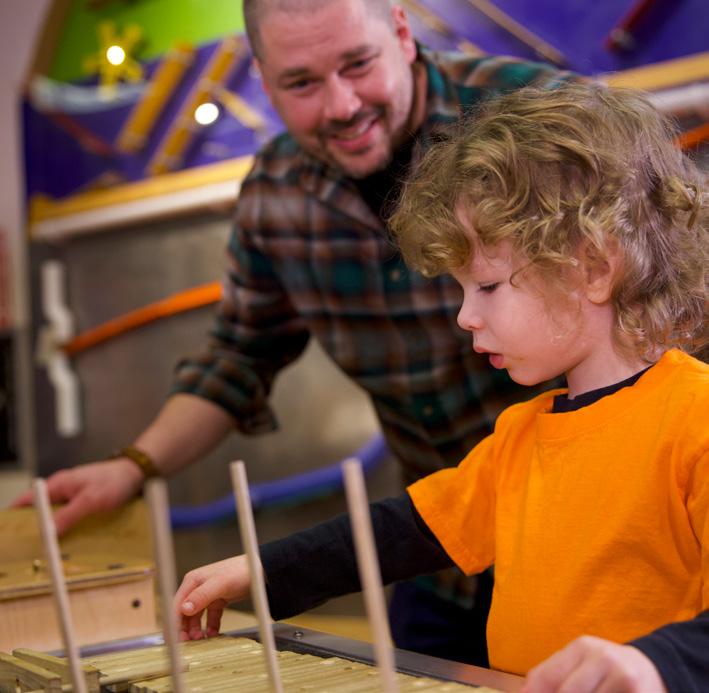
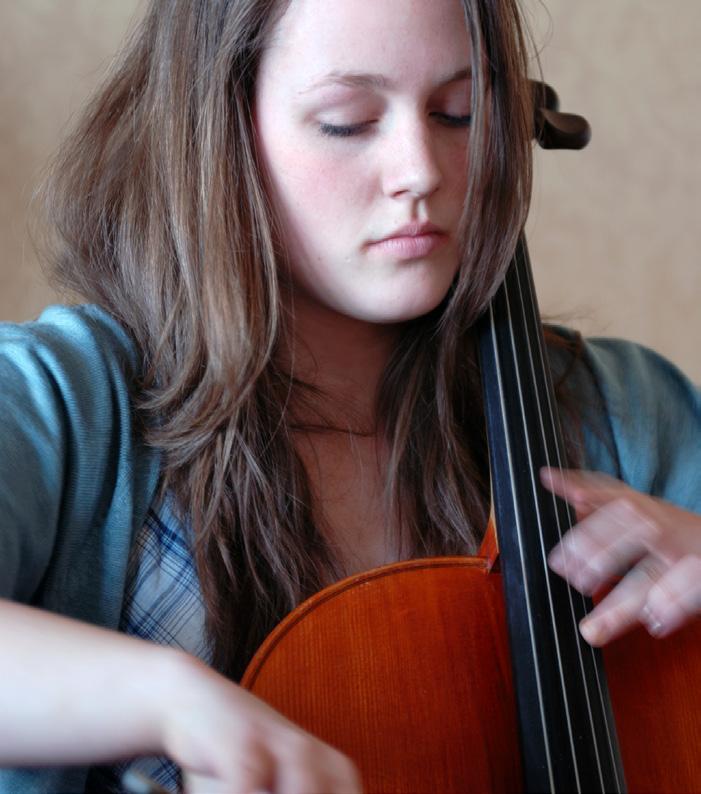

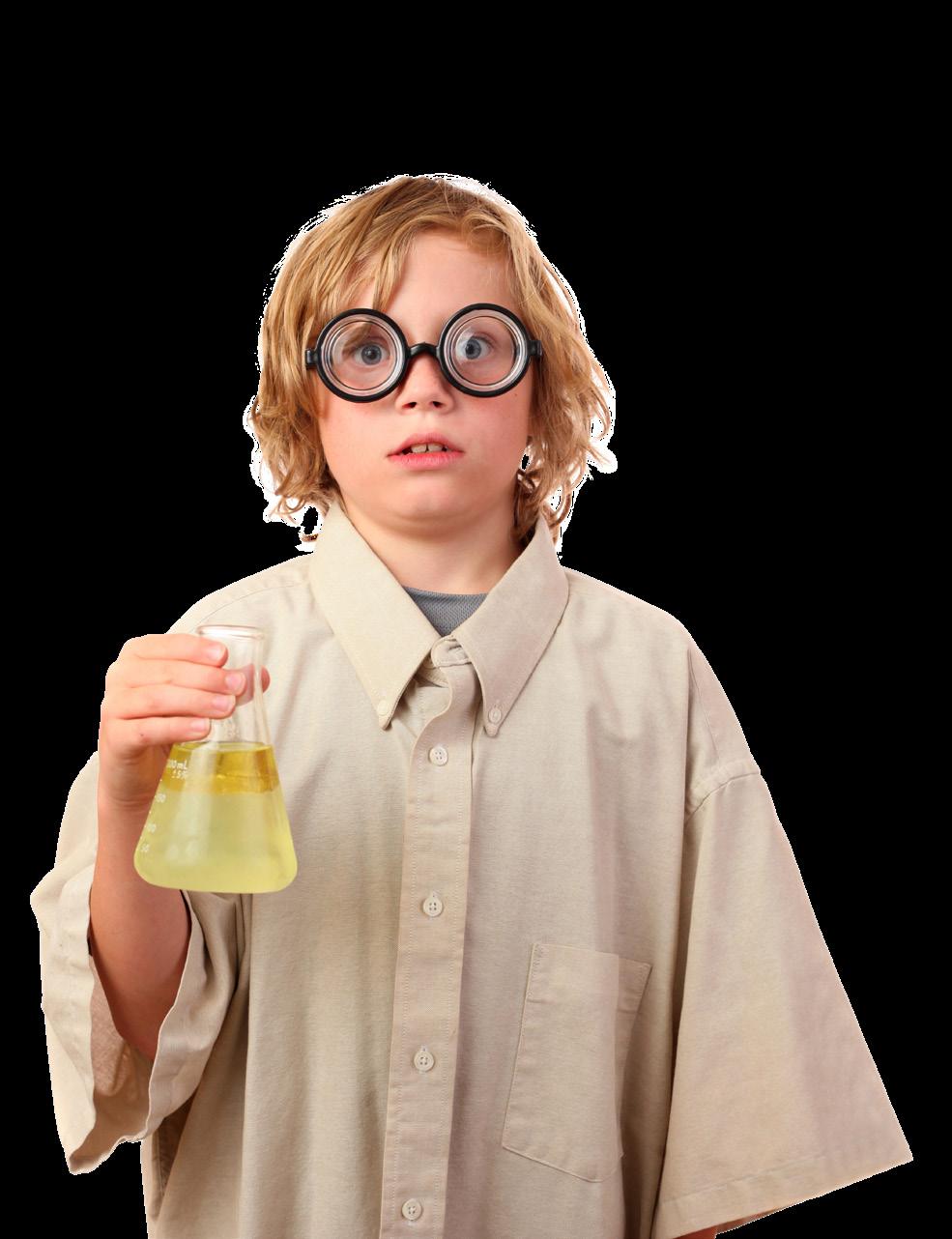














1. RICK EPSTEIN
A Dad’s Eye View contributor, also award-winning columnist, and journalist. Author of Rookie Dad (Hyperion) and The Right Number of Kids (McKenna Publishing Group). His wife and three daughters run a living laboratory in which he is constantly tested, analyzed, and experimented upon. It’s as if a guinea pig could write.
2. BONNIE HARRIS
Bonnie is Oregon Family Magazine’s resident Movie Review Master Extraordinaire. She enjoys watching movies of all kinds, and has been doing movie reviews for over 9 years and counting. She lives in Eugene with her family, enjoys gardening and cooking.
3. JAN PIERCE
Jan Pierce is a retired teacher and freelance writer. She is the author of Homegrown Readers and Homegrown Family Fun. Find Jan at www. janpierce.net.
4. TIM SCOTT
Tim Scott was raised in Northern Virginia, where he frequently visited Smithsonian Museums. His love for museums prompted him to apply for two part-time summer positions, leading an informal career as an Exhibits Technician at Virginia Aquarium & Marine Science Center. He spent over seven years volunteering on the Stranding Team assisting with rehabilitation of marine life. After 12 and a half years as Curator


of Science Exhibits & Collections he moved to Norfolk, VA as Exhibits Director at the National Maritime Museum in Norfolk, VA. He taught Physical and Historical Geology at Tidewater Community College and later became Deputy Director at the Sciencenter in Ithica, NY. In 2016, he relocated to Eugene and joined Eugene Science Center as Executive Director. He enjoys hiking, camping, kayaking, photography, cooking, and spending time with his two amazing children currently at Spencer Butte Middle School and South Eugene High School.
5. KRIS ANN VALDEZ
Kris Ann Valdez is a freelance journalist and mother of three spunky children and a fluffy dog. She enjoys hiking, gardening, and writing for children. Her first elementary-chapter book is due out with Twenty Hills Press in 2026 under the pen name Ann Val. Follow her at krisannvaldez.com or @krisannvaldezwrites.
6. RODDY SCHEER
Journalist and photographer specializing in environmental issues, the outdoors and travel. When he is not out in the field taking pictures, Roddy runs EarthTalk, the non-profit Publisher of the syndicated EarthTalk Q&A column and the EarthTalk.org and Emagazine 3 1 2 4 5
Oregon Family Magazine is distributed monthly in the greater Lane County area at over 150 high-traffic commercial locations.
Parents Publishing
Kauten
Design & Illustration
Email: info@oregonfamily.com Web: www.oregonfamily.com Facebook: www.facebook.com/OregonFamily

FAMILY OWNED AND OPERATED SINCE 1993
Opinions expressed by contributors or advertisers are not necessarily the opinions of, nor an endorsement by this publication.
© 2025 Pacific Parents Publishing. All rights reserved. No part of this publication may be copied or reproduced without prior expressed written consent from Pacific Parents Publishing.
– JOSIAH BARNES
THE PRODUCTION OF seaweed has boomed to over 35 million tons in the past few years, while the industry has become a $16.7 billion market. Its popularity is due to its notable ecological benefits, like its absorption of carbon, production of food and marine habitat production. Seaweed proponents praise them for being easy to grow and creating bioplastics while critics argue that there are significant shortcomings.
Seaweed farms are not only fast and easy to grow, but also notably versatile. Unlike terrestrial crops like trees, fruits, vegetables and herbs, seaweed requires no fertilizer, pesticides, freshwater or land to grow. Thus, it can easily adapt to diverse environments and survive without constant human intervention.
aiding both prosperous and polluted environments. Seaweed farms also create forage and
water than eelgrass, mangroves and salt marshes combined. It can also be cultivated to

refuge habitats for commercially important fish, like cod and tuna, while acting as a food source for countless other species.
Furthermore, the growth of seaweed farms benefits marine life. Beyond improving water quality, the presence of seaweed farms buffers the effects of ocean acidification in surrounding areas, greatly
Seaweed can also decrease the impacts of carbon and other greenhouse gases. By absorbing both nutrients and carbon dioxide to grow, seaweed decreases the number of toxic emissions entering oceans and the atmosphere. Seaweed pulls more greenhouse gases from
reduce heavy metals and other pollutants, acting as a sponge to rid the ocean of toxins. It also plays a critical role in the creation of bioplastics, which mitigate plastic pollution by replacing carbon-intensive products and greenhouse gases. Despite the benefits, seaweed farms can be expensive and difficult to implement globally. The higher price decreases the demand for the algae, making it difficult for farmers to support
the target growth of their farms. Furthermore, 98 percent of farmed seaweed is grown in Asia, illustrating the lack of geographic diversity worldwide. So, scientists are looking for ways to expand the reach and impact of seaweed farms to maximize their benefits. Specifically, many are experimenting with growing seaweed aimed at reducing water pollutants like metals. Ultimately, Alexandra Cousteau, head of the non-profit Oceans2050, noted that “Seaweed farming offers a scalable, nature-based solution for carbon removal while delivering co-benefits such as biodiversity enhancement, economic opportunities, and food security.” ✦
CONTACT: With the Right Tools, Seaweed Can Be an Important Piece of the Climate Puzzle, nature.org/en-us/what-we-do/ our-insights/perspectives/blue-carbon-seaweed-nature-based-climate-solution/
EarthTalk® is produced by Roddy Scheer & Doug Moss for the 501(c)3 nonprofit EarthTalk. See more at https://emagazine. com. To donate, visit https://earthtalk.org Send questions to: question@earthtalk.org
¡Hola!
¿Cómo estás?

Que te vaya bien.
Estoy bien, ¿Y tú?
BY KRIS VALDEZ
ALWAYS WANTED TO BE BILINGUAL. ALTHOUGH MY HUSBAND grew up in a Spanish-speaking home, and I took a few years of Spanish, we are still only conversational. This lack of fluency caused me to shy from speaking much Spanish with my children at home because if I couldn’t teach them everything, why try?
Then I took a class from a Spanish teacher who encouraged me to practice with my children, even if it was just a little each day. This changed my perspective.

When I started practicing Spanish with my family, I had unrealistic expectations that we would master Spanish fluently in a year or two. I soon found we would need full immersion in a Spanish-speaking country for us to gain that kind of fluency. But once I shifted my expectations, I decided adding a little Spanish to our lives every day is better than none…

1
MEMORIZE COMMON PHRASES. I set out to learn common Spanish phrases I could use with my children daily. These commands came from basic life routines, such as - put on your shoes, brush your teeth, and wash your hands.
I focus on one to three new phrases a week and incorporate them into our daily routines.
I stick them on a fridge or other visible place. This works well with children of all ages, even babies. Although, sometimes I like to rephrase it for my littlest (17 months old), such as: Do you need help putting on your shoes?
2
Read often. The more you practice reading in a foreign language, the more comfortable you will become with it.
Read age-appropriate texts. You don’t want to overwhelm (or underwhelm) your little ones.
Read loud and clear. It’s okay if you only make it through a few pages in the second language. Your mind will get tired and so will your tongue!
Point out as much vocabulary from the book. Say it in both your native language

and also in the second language. This helps reinforce the idea that there can be different words for an object. You can also do this with books solely written in your first language as you learn more vocabulary.
Start with titles you are already familiar with in your first language. For me, I found the classics I knew best helped to increase my understanding of the text (i.e. Are You My Mother? Or Don’t Let The Pigeon Drive The Bus!). I also greatly appreciate Spanglish and bilingual texts so I can see the foreign words next to the English ones. A librarian can recommend more texts.
Do you have a friend or relative who speaks the second language you want to learn? Facetime them with your kids and ask them to only speak to you in that language. Even five minutes of practice with a native speaker can help you pick up a new phrase, vocabulary, and pronunciation you didn’t know before.
If you don’t have a friend or relative who you can practice with, I recommend trying a virtual school, such as Homeschool Spanish Academy. These sites allow you to connect with native speakers who can help you achieve your second language goals through one-on-one weekly online classes. Personally, I’ve used this academy for over a year and have made great gains with it. The pricing is fair for 25 or 50 minutes of practice.
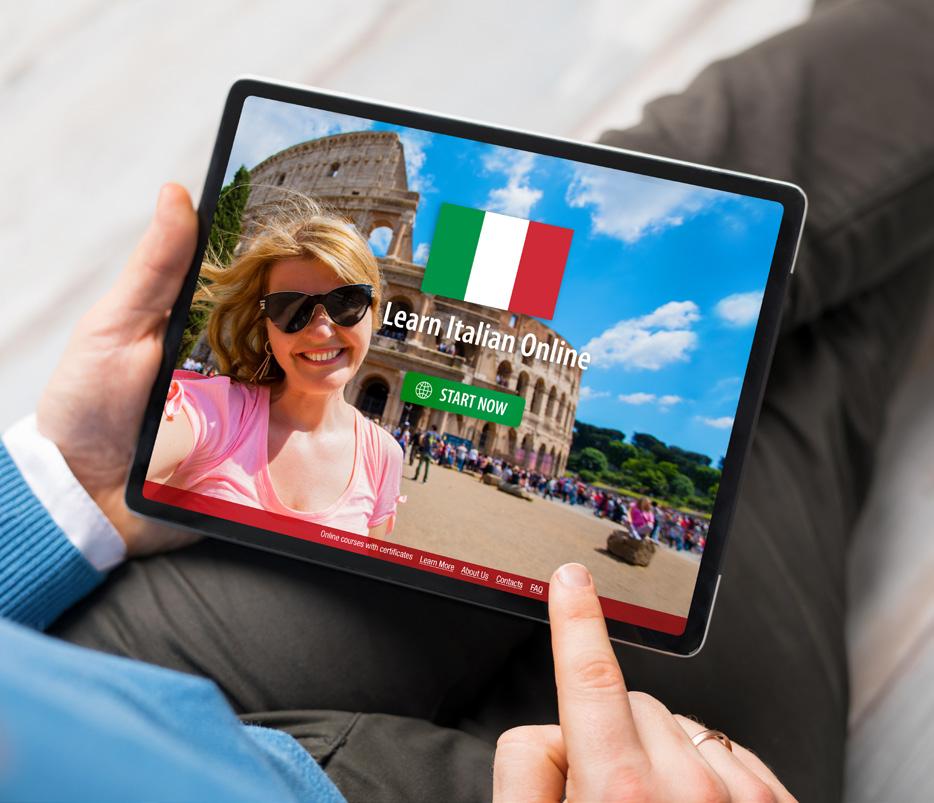
BY BONNIE L. HARRIS
CHILDREN ARE always asking why. Why is the sky blue? Why do socks get lost in the dryer? And why does the Tooth Fairy come when I lose a tooth? The new animated feature from Shout Studios, The Tooth Fairy Tale, can’t explain everything, but it does a great job of putting an entertaining spin on the
THE TOOTH FAIRY TALE
Shout Studios Entertainment
Rated: PG
Streaming on Amazon
Tooth Fairy legend. At times hilariously funny with puns and pop culture references, the film is a bit uneven and narratively predictable, but overall, it’s a fast-paced adventure about two teens who want to change their worlds. Van, a wayward newbie tooth fairy, is fascinated by the forbidden cave of the goblins and their need for fairy dust. Gemma, a pretty tech-obsessed goblin, is determined to discover the cure for the goblins’ sensitivity to light and she needs fairy dust for her experiments. Accidentally thrown together, the teens discover they aren’t

that much different and their friendship blossoms when they each visit the opposite world. Unfortunately, they’re found out and both sets of parents are upset along with a horde of hungry spiders who, like the parents, want to keep the natural order of things. Fair warning: there are a lot of spiders running around and they have a nasty queen who plots to capture Van and Gemma for dinner! When Van and Gemma are eventually entangled in the queen’s web, both families must work
THE PENGUIN LESSONS
Lionsgate, Rated: PG-13
Streaming on Amazon
WE CAN LEARN a lot from a penguin like how to make friends, how to live a good life, and how to do the right thing at the hardest moments. In The Penguin Lessons, misanthrope and globe-hopping English teacher Tom Michell rescues a stricken penguin from an oil spill to impress a pretty woman. He loses the woman, but gains a devoted friend in the penguin, who is eventually named Juan Salvador. Set in 1976 Argentina in an all-boys prep school, Michell tries unsuccessfully to hide the penguin and is astonished that his housekeeper, his students, and even the headmaster fall in love with Juan Salvador. Along the way, we learn of Michell’s past life and trajedy as he slowly reconnects with people while caring for his feathered friend. Amid the violence in Argentina at that time, Michell learns that injustice only happens when good people do nothing and say
together to rescue them and defeat the spiders. But just when the battle seems lost, another of Van’s unlikely friends, Rupee, saves the day. Overlooked and underappreciated, Rupee is a wise forest troll who demonstrates with his loyalty and bravery that the smallest among us is often the strongest. The film ends with the promise of future fairy and goblin adventures, and I’m sure the spider queen will come creeping back for revenge. Pop some popcorn, enjoy the movie, and forget about those lost socks! ✦

nothing. Eventually, he speaks up and is arrested by the military, then released. Life isn’t perfect, so keep the Kleenex handy for the ending, which is poignant and heart-warming. And be sure to watch the epilogue for footage of the real Juan Salvador.










Eugene Montessori School 1:10 open Hours: 8:00 - 3:30pm open no
Ridgeline Montessori School 1:14 250 Hours: 8:30 - 3:05
City of Eugene Recreation Youth Empowerment
Early Childhood Hub of Lane County N/A
Eugene Family YMCA varies varies Mon-Fri: 5am-9:30pm Sat: 6am-8pm; Sun: 6am-7pm open until filled ALL Welcome varies yes Eugene Science Center 1:14 open Hours: 10am-5pm Daily July-Aug Tues-Sun in Sept-June
MECCA: Materials Exchange Center for Community Arts
Cultural
Triple P: The Positive Parenting Program
Eugene Montessori School
2255 Oakmont Way Eugene, OR 97401
541-345-7124
www.eugenemontessorischool.com
Eugene Montessori School offers a quality education for children age 3 - Kindergarten. The individual curriculum fosters the child’s natural curiosity and love of learning while building self-confidence and independence. In our multi-age classrooms, children work together as a community caring for each other and the environment. For more information please call 541-345-7124.
Ridgeline Montessori School
4500 W. Amazon Drive
Eugene, OR 97405
541-681-9662
www.ridgeline.org
Ridgeline Montessori provides an academically rigorous public Montessori education. Students balance their freedom to explore and think for themselves with their responsibility to work and learn within a community.
City of Eugene Recreation Youth Empowerment Program
541-682-5370
https://getrec.org/empowerment

Funded by the Community Safety Payroll Tax, the Youth Empowerment Program works with community partners to empower teens by building life and job skills, offering access to caring youth and adult mentors and increasing access to other vital community resources. Programs are designed to be low-barrier and inclusive so that every young person is provided the opportunity to grow up safely and access their best possible future.
Early Childhood Hub of Lane County
3171 Gateway Loop Springfield, OR 97477 541-741-6000
www.earlychildhoodlane.org
The Early Childhood Hub of Lane County is a centralized resource hub for local parents and families, providing free and low-cost parenting support and early learning

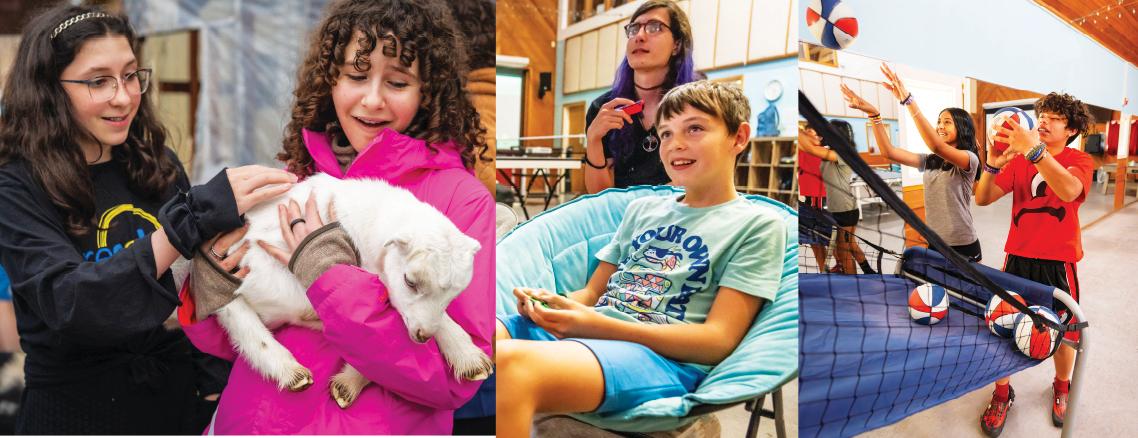

resources. Programs include Preschool Promise, Dolly Parton’s Imagination Library, Black Early Learning, and online directories like local parenting classes, rural resources, and summer and family fun activities. Visit our website to sign up for our newsletter, check out our activity calendar, and more!
Eugene Family YMCA
600 E. 24th Ave.
Eugene, OR 97405
541-686-9622
EugeneYMCA.org
Programs for infants through high school. See our August camp ad on page 11!
Eugene Science Center
2300 Leo Harris Parkway
Eugene, OR 97401
541-682-7888
https://eugenesciencecenter.org/
Visit Eugene Science Center for
Your local guide to free and low-cost parenting and early learning resources! earlychildhoodlane.org
• Parenting classes
• Dolly Parton’s Imagination Library
• Black Early Learning program
• Preschool Promise
• Rural resources
• Activity Calendar
• Family & summer fun
Learn more at:

hands-on exhibits, state of the art planetarium shows, school group field trips, early education programs, and special events. Offering science outreach programs, no-school-day workshops, and camps designed to ignite your child’s curiosity.
MECCA: Materials
Exchange Center for Community Arts
555 High Street Eugene, OR 97401
541-302-1810
www.materials-exchange.org
MECCA inspires our community to re-imagine materials while breaking down the financial barriers to arts and creativity. Free Recycled Art Curriculum is available for download on our website and our Teacher Resource Center houses a surplus of supplies available for the classroom and homeschool at no cost.

Access free resources for teachers and educators in schools, community organizations, clubs, service groups, home schools, churches, non-profits, and social justice organizations.

555 High Street
Open Tues.-Sat. | 11 a.m.-6 p.m. materials-exchange.org | @meccaeugene

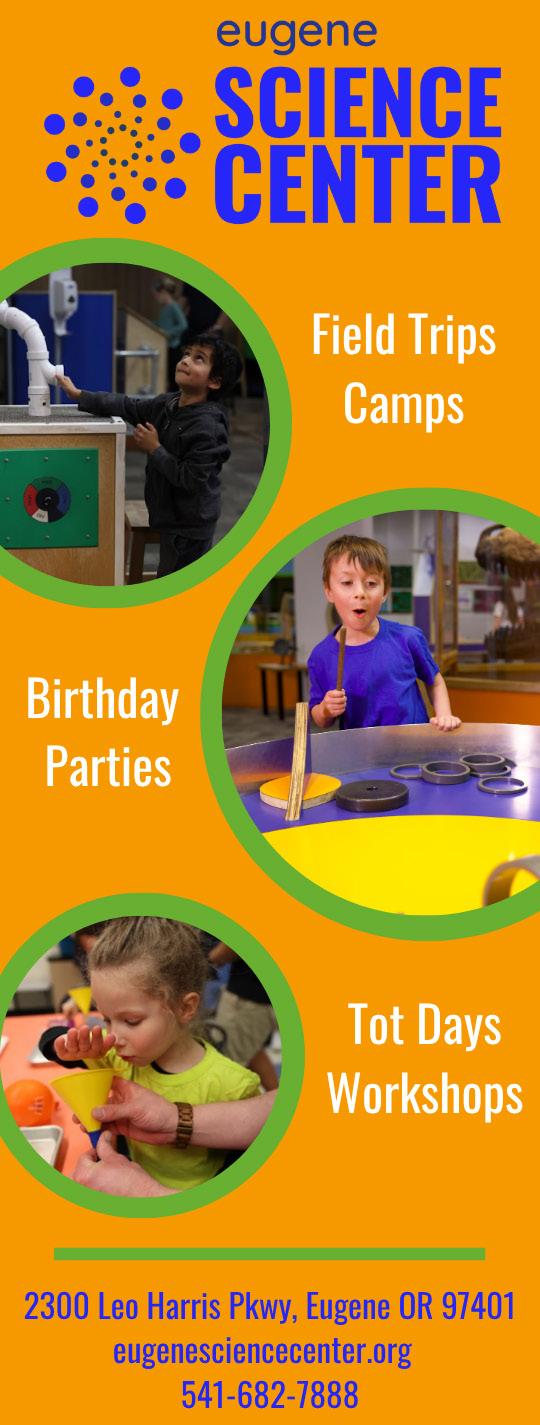
Museum of Natural and Cultural History
1680 E. 15th Ave. Eugene, OR 97403
541-346-3024
www.mnch.uoregon.edu/
Inspire wonder! The museum is a place for kids of all ages to experience fun, inquiry-based learning in science and social studies. Kids can dig deep into Oregon’s geology, natural history, Native American history, and more. Visit our website to learn more! (Please see our ad on page 15).
Nearby Nature
P.O. Box 3678
Eugene, OR 97403
541-687-9699
https://www.nearbynature.org/
Join us for nature, science, play, exploration, art, and gardening -- all outdoors! Based in Alton Baker Park, Nearby Nature hosts Summer Daycamps, No-School-


Day Adventures, the Natural Neighbors After School Program, and the Wonder Keepers Preschool. We also run field trips, school visits, preschool Green Start Play Days, Nature Quests, and special events for families, including the October Haunted Hike! Nearby Nature is a partner in the Network Charter School and teaches classes for middle and high schoolers. Scholarship aid, membership discounts, and volunteer opportunities are available. Visit our website for current events and program registration.
Oregon Family Support Network
72A Centennial Loop #150 Eugene, OR 97401
503-363-8068 ofsn.org
Providing peer support for families of children and youth experiencing behavioral, emotional, and mental health challenges.
86 Centennial Loop Eugene, OR, 97401
541-484-1449
parentingnow.org/triple-ppositive-parenting-program/
Triple P, the Positive Parenting Program, is an online parenting course for parents of children ages 2-12. Triple P doesn’t tell you how to parent but gives you strategies you can adapt to your
family’s needs. This program is free for all Lane County families. Visit https://parentingnow.org/ triple-p-interest-form/ to sign up! (Triple P esta disponible en español.) (Please see our ad on page 16).
Whole Earth Nature School PO Box 5223 Eugene, OR 97405 541-937-5437
WholeEarth.org
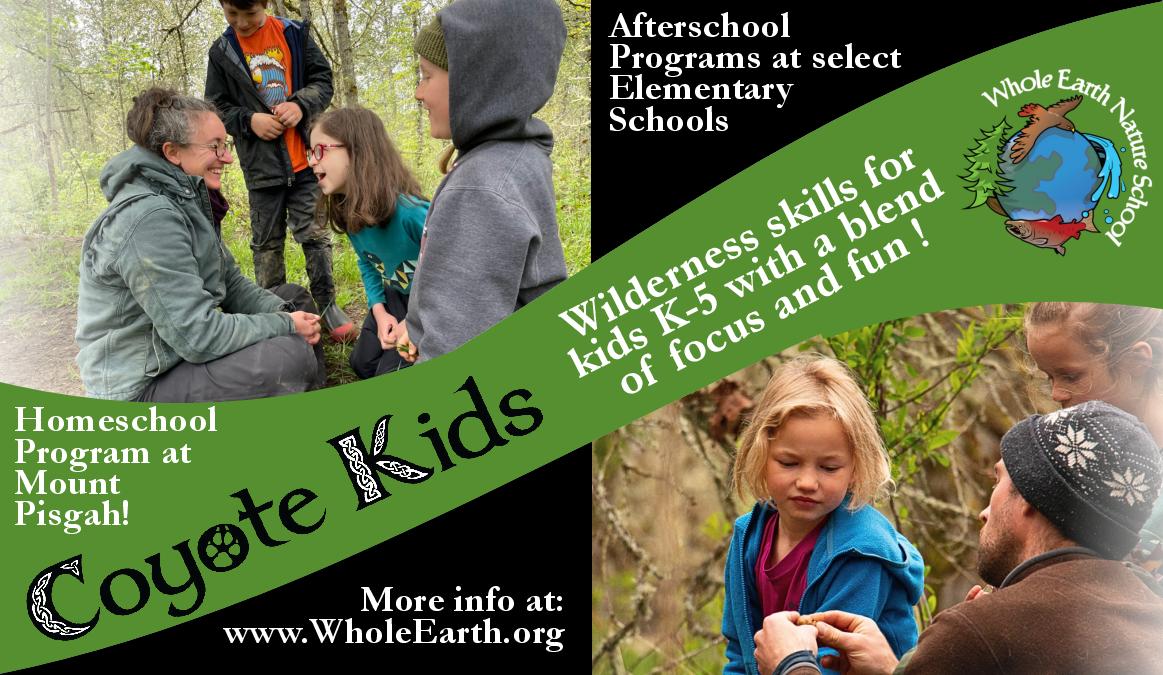
Fridays and Saturdays in July and August 10:00 a.m. to 5:00 p.m.

reachoutoregon.org 1-833-REACH-OR 1-833-732-2467 ofsn.org

Join us in the museum’s courtyard this summer for lots of family fun with hands-on bilingual activities. Perfect for children ages 3 and up.
August 8 & 9 and 15 & 16
Take a trip into the past, dig into archaeology, uncover artifacts, and discover what we can learn from people who lived before us.
August 22 & 23 and 29 & 30
The whole family will enjoy exploring the environment, playing games, solving puzzles, and tackling wacky challenges.

Activities are included with admission and free for MNCH members and UO ID card holders. Show your Oregon Trail or other EBT card for an admission discount.

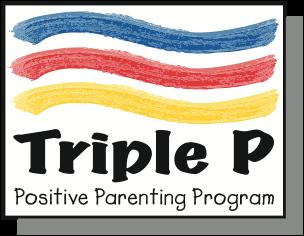


Whole Earth Nature School offers weekly daytime and afterschool programs for student from K - high school. Our afterschool programs are limited to certain elementary schools so check our website for an updated list of schools. We also offer teen mentorship programs for junior-high and highschool students with multiple overnight trips to the coastal and cascade ranges. Our mission is to mentor students in the outdoors to foster confidence, resilience, and kinship with nature. We do this by teaching ancestral wilderness skills such as fire making, shelter building, wild plant identification and harvesting, and much more, all entirely in the outdoors. Visit our website for more information and to sign up: www.wholeearth.org
Waste Wise Lane County 3100 E. 17th Ave. Eugene, OR 97403 541-682-1223
www.wastewiselane.org
Waste Wise Lane County—a part of Lane County Waste Management—offers free sustainability and waste prevention resources for Lane County educators that seamlessly integrate standards-based activities, lessons and field trips into existing classroom instruction.

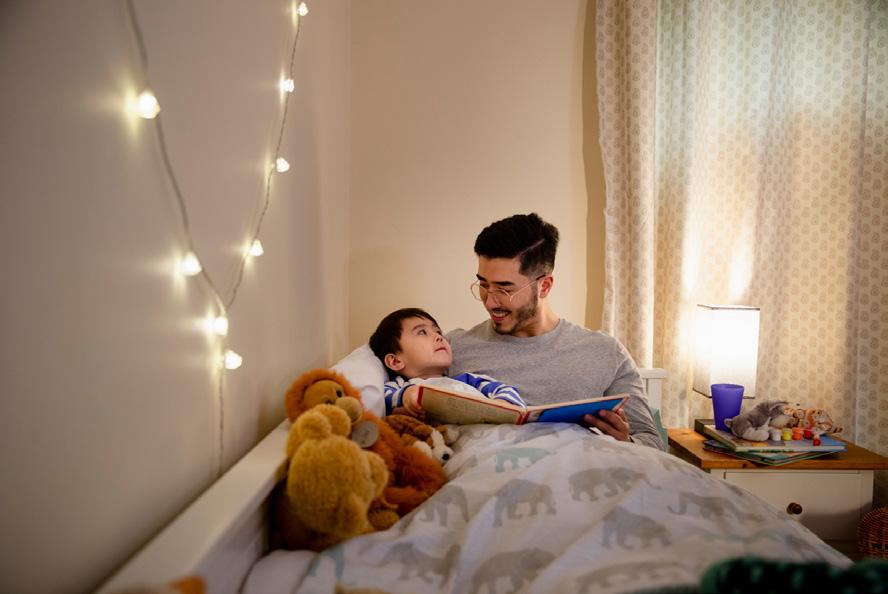



BY RICK EPSTEIN
about to re-open, in many districts it’ll soon be time to think about science projects. My ideas range from unworkable to stupid, so the kids consult my wife Betsy and leave me out of it.
One day last year I went into the kitchen to investigate a mysterious crunching sound and found my 12-year-old daughter Marie using a tablespoon to grind up cornflakes in a cup.
“What’s this?” I asked.
“My science project,” she said. All around her was the fallout of creativity – opened cereal boxes, spilled cornflakes, crumbs, crumpled note paper, and the remains of an after-school snack. It was the kind of unrestrained mess that is made by budding scientists, brilliant chefs or wild bears. “I’ve got three brands of cornflakes, each with a different percentage of iron in it. I grind them up and use a magnet to see how much of the powder it picks up from the three different piles of powder. It’s going pretty well. But the teacher said a science project has to answer a question and I can’t figure out what question this answers.”
I suggested, “How about: Is the iron in cereal, like, REAL iron?”
“Something like that, Dad,” she said dismissively.
Science projects were always hard for me because I never understood what they were (although I always knew one when I saw it).
My problem was most acute in seventh-grade because my
teacher was the dour Mrs. Plantinga, a retired research scientist from DuPont. She took science seriously and sensed that I did not. Once, in class she ordered me to “Wipe that sappy grin off your face!” I felt that as long as I sat quietly in a listening posture, I had a right to grin sappily. I reddened with embarrassment.
Science projects would be no joke that year, and we’d have to present them in front of the whole class with Mrs. Plantinga watching in judgment, God-like, from the back of the room.
The day before my project was due, I was still pawing desperately through the World Book Encyclopedia seeking an idea. Then I found the story of Archimedes, an ancient Syracusan who was trying to figure out how to tell pure gold from a cheap alloy. As he lowered himself into his bathtub, he realized that pure gold was so dense that a pound of it would displace less water than a pound of a less-dense metal. Whereupon he jumped out of the tub and ran down the street, yelling “Eureka!” A scientific principle and a nutty genius running around without his toga. What more could I want?
The next day in science class Vicky Nestor presented the findings
of a survey she’d done linking high grades to good breakfasts. Mrs. Plantinga beamed, and my Pop Tarts churned within.
Jim Delahanty then brought his candle-powered radio to the front of the room. He’d found the plans in Popular Electronics. Jim explained how it worked and lit the candle. Mrs. Plantinga put her ear down to the wires and transistors that were carefully mounted on a metal box, and said, “James! This is marvelous. I can hear music!” You’d think he had INVENTED radio.
The teacher’s smile faded as I set up a big Hawaiian Punch can brimful of water on the
discovered it and he ran around yelling about it. He was naked. This is a one-pound iron weight,” I said, holding up a pinecone-shaped weight I’d borrowed from my mom’s Black Forest cuckoo clock.
The class watched in fascination – as if I were a live mouse being fed to Mrs. Plantinga’s classroom snake. I plunged the pound of iron into the can. The water level rose, but because of surface tension the water bulged up over the rim of the can and would not spill. “Uh, the water is supposed to run down into this measuring cup,” I said lamely. But the surface of the water was as tough as bull-hide and nothing happened – except Mrs. Plantinga, disgusted by my lack of preparation, shoddy setup and incomprehensible explanation, snarled, “Sit down!”

About 10 years later I encountered Jim Delahanty and his wife in line at a movie theater. I reminded him of his science project, and he confided, “You know, I followed the instructions in the magazine, but the darn thing wouldn’t work. So I bought a tiny transistor radio, turned it on VERY low, and built it into the metal box. I figured no one would ever put their ear down there unless the candle was lit.”
Well, it wasn’t science, but it was something. ✦
Rick can be reached at rickepstein@yahoo.com.
BY JAN PIERCE
YOUR SUMMER MONTHS FLEW BY with the crazy combination of a more relaxed life and filling every available moment with fun. But now it’s time to gear up for the fall back-to-school schedule. It’s a time to reflect, plan and set new priorities.
What worked for your family last year? What didn’t? In our busy lives it’s easier to become over-scheduled and stressed than to take on too few commitments. What really matters? What are the unique needs of your family at this very moment?
Why not buy a whiteboard calendar and begin to fill in your individual and family commitments? You’ll immediately see where there’s room for new activities and where you need to cut back. You’ll gauge the value of each activity and may find that even some enjoyable and worthwhile activities need to be cut.
Is there room in your new schedule for quality family time? Homework? Enough sleep and relaxation? Meals together? There’s


no right or wrong in planning the family schedule, in fact each family will see the need for different priorities based on their family make-up, but being in control of the schedule is definitely desirable. Or, guess what? The schedule will control you.
Here are ten questions to ask as you head into the new school year. Your answers will help you set priorities, find a proper balance of work and play and guard precious family time.
1
2
WHAT IS THE new bedtime for the kids?
HOW MANY ORGANIZED activities (sports, lessons,) will each family member engage in?
3
HOW MUCH ACTIVE play will the children engage in daily compared to screen time and other indoor activity?
4
HOW MANY MEALS will the family eat together each week?
5 WHEN WILL WE set time aside for homework?
6 IS THERE ANY part of our schedule causing conflict within the family? How can we fix that?
7
8
9
HOW MUCH TIME does each family member spend on household chores?
HOW OFTEN WILL we entertain or have friends over?
ARE WE ALLOWING adequate time for the family to relax together?
10 WHEN WILL OUR family schedule time for giving to the community, the church, the poor and needy?
Back to school time is saying goodbye to summer freedom and looking ahead to a great new school year. The time you spend in planning and decision-making now will be rewarded as you move into your new, balanced fall schedule. ✦
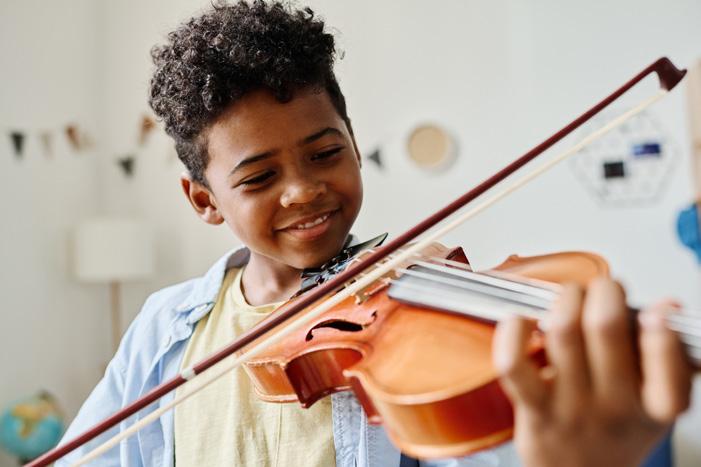

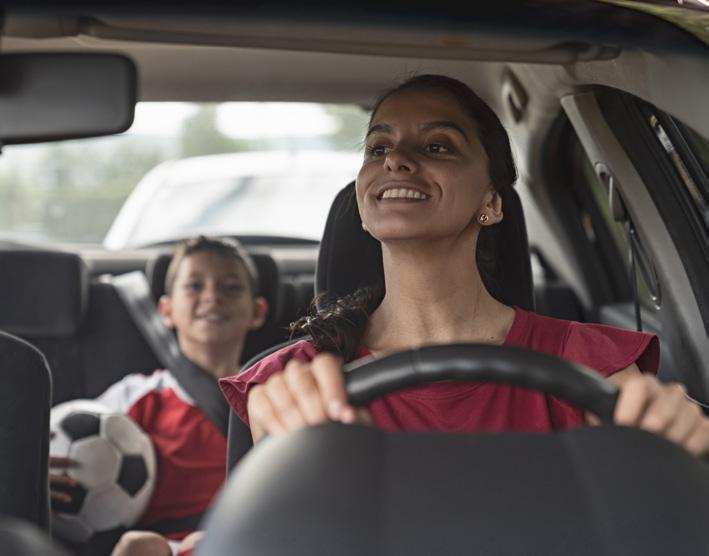
BEACH VACATIONS, BACKYARD BARBECUES AND long road trips make summer a season of spontaneity. Often cited as memory-making moments, these unplanned adventures can also make it a challenge to stay on track with your health. This summer, sticking to your wellness goals doesn’t have to mean missing out on delicious, sweet treats.
When summer throws you off your routine, reach for convenient sources of high-quality protein, like Premier Protein High Protein Shakes. With 30 grams of protein, 160 calories and 1 gram of sugar, you don’t have to choose between summer fun and nutrition. These summer shakes bring joy back to the health journey as easy and delicious graband-go solutions, putting a healthier, happier lifestyle within reach. Not to mention the shake’s 24 vitamins and minerals, including vitamins C and E, which help support a healthy immune system as part of a healthy diet and lifestyle.
When the sun is beating down and the only reprieve is an ice cold refreshment, let this twist on frosted lemonade be your escape from the heat. With fruity flavor and added protein, Frosted Peach Lemonade allows you to travel to a tropical island from the comfort of home.
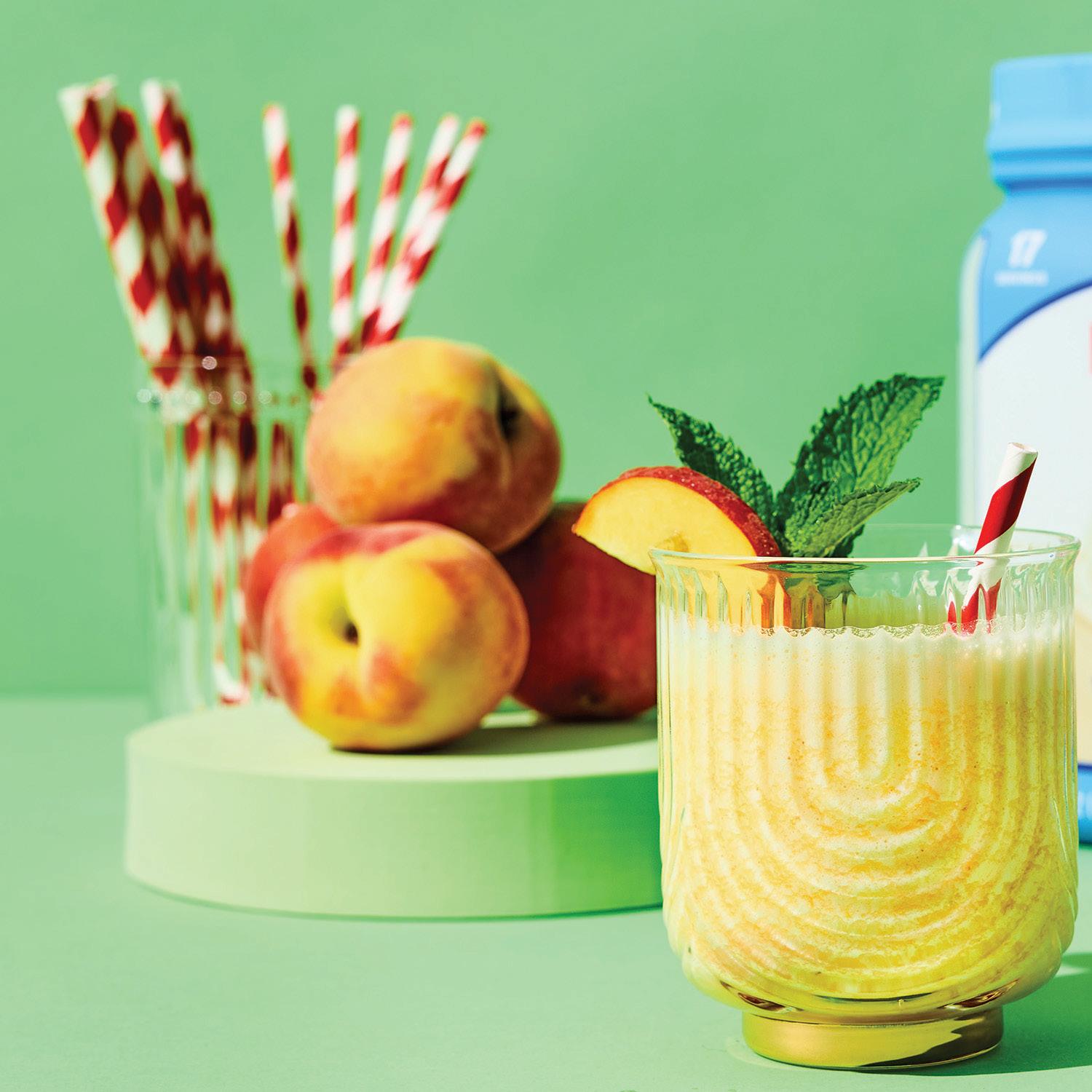
FROSTED PEACH LEMONADE
INGREDIENTS
• 2 scoops Premier Protein Vanilla Milkshake 100% Whey Protein Powder
• 1 cup lemonade
• 1 cup frozen peach slices
INSTRUCTIONS
In blender, blend protein powder, lemonade and frozen peach slices until smooth.
From hot days to cool nights, Premier Protein delivers the perfect solution for the classic bonfire indulgence with Protein Marshmallow S’mores. Your new summer classic, this unexpected s’more hack lets you embrace a sticky treat without sacrificing your nutritional goals. With nutrition that works for you, delicious recipes and nutrition tools help make the ride smoother and more enjoyable as a fun reminder the health journey doesn’t have to be daunting.
To find more information and protein-packed recipes that’ll help keep your summer health goals on track, visit PremierProtein.com

PROTEIN MARSHMALLOW S’MORES
INGREDIENTS
• 2 cups Premier Protein Vanilla High Protein Shake
• 5 tablespoons gelatin
• 3 scoops Premier Protein Vanilla Milkshake 100% Whey Protein Powder
• 3 graham crackers
• 3 chocolate bars
INSTRUCTIONS
1. Add protein shake to small saucepan and layer gelatin on top. Let set 5-10 minutes (gelatin will start to “bloom”).
2. Over low heat, whisk mixture periodically until consistency thins.
3. Pour into mixing bowl and allow to cool 5-10 minutes until mixture is warm, not hot.
4. Add protein powder; whisk 10-20 minutes, or until light and fluffy. Mixture should not break and fall immediately when whisk is lifted.
5. Pour mixture into lined pan and allow to set in refrigerator.
6. Slice and serve alone or with graham crackers and chocolate bars.
BY TIM SCOTT

SCIENCE ISN’T JUST A subject - it’s a way for children to explore, understand, and make sense of the world around them. From a child’s earliest years through adolescence, engaging in hands-on, exploratory science experiences can play a vital role in healthy development and long-term academic success.
The first five years of a child’s life are marked by rapid brain development. A newborn enters the world with all the brain cells they’ll ever have; but it’s the connections between those cells - called neural pathways - that power learning and development.
During these early years, the brain forms up to 1 million new neural connections every second, and by age 5, about 90% of a child’s brain is already developed.
Engaging in interactive and educational play during this window supports the formation of strong, lasting neural connections. Simple activities like building with blocks, playing with water, sorting objects, or observing animals can spark curiosity and enhance cognitive development. Most importantly, when these experiences are shared with family, they also strengthen familial bonds and provide a foundation for emotional and social growth.
As children enter elementary school, cognitive abilities expand, allowing them to begin understanding more complex

and abstract concepts. This is a great time to introduce them to broader scientific ideas—like how machines work, why seasons change, or what causes things to float or sink. Research consistently shows that regular exposure to enriching learning experiences, both at school and at home, is a strong predictor of academic success.
Supporting your child’s interest in science can be as simple as asking open-ended questions, encouraging experimentation, and connecting learning to everyday life. Family outings to science museums, nature centers, or even a walk through a local park can inspire discovery and wonder.
By adolescence, children begin developing higher-order thinking skills such as problemsolving, analysis, and reasoning. These are the years when a child’s interest in STEM
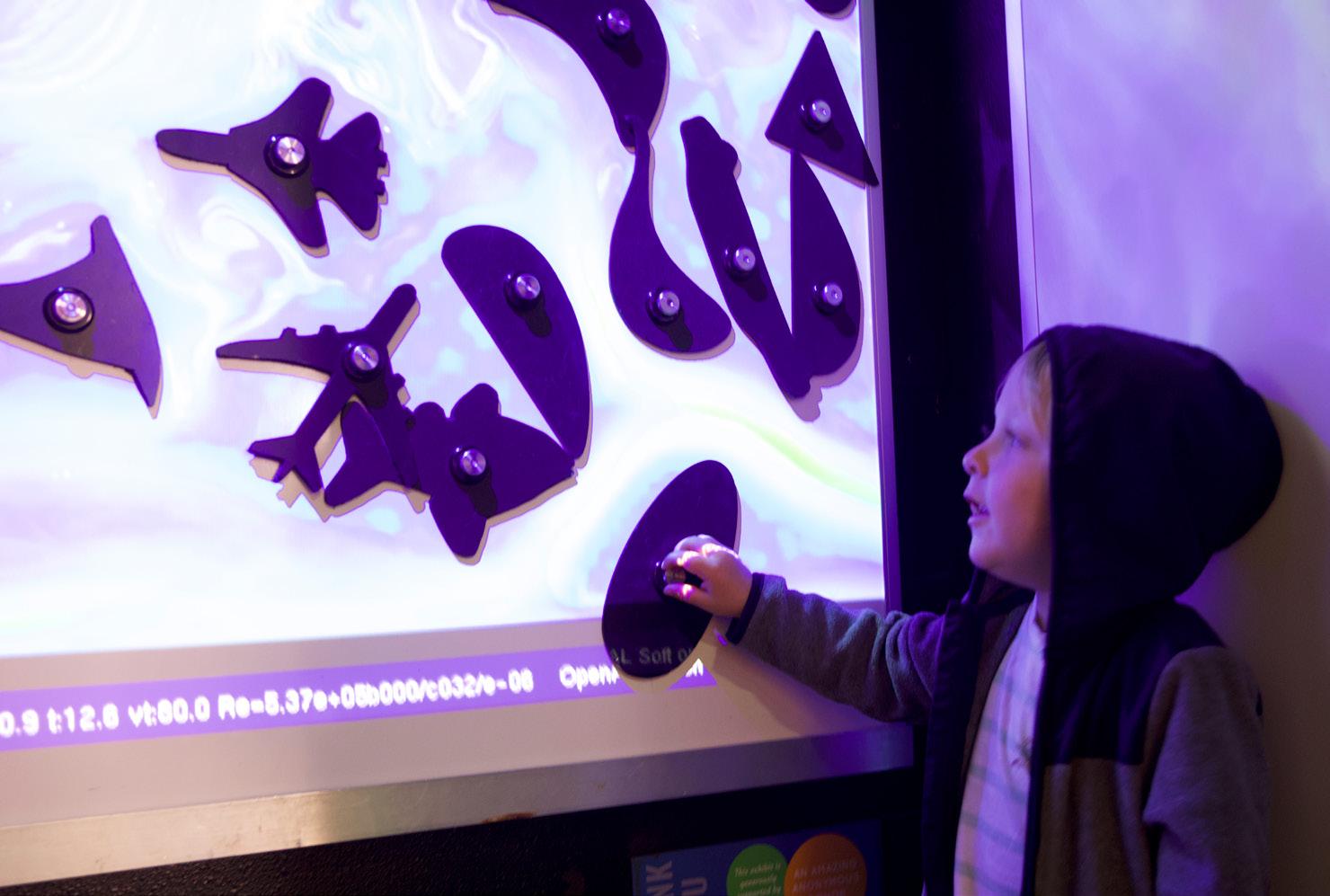
(Science, Technology, Engineering, and Math) can deepen. Whether or not your child ultimately chooses a STEM-related career, developing critical thinking is essential for navigating real-world challenges, participating in civic life, and making informed decisions.
Encouraging teens to ask questions, engage in debates, and participate in STEM-focused clubs, camps, or enrichment programs can help maintain their interest and support long-term learning.

Supporting a child’s engagement with science doesn’t require a background or education in that subject. What matters most is your willingness to be curious alongside them, and exposing them to learning opportunities. Whether you’re stacking blocks, peering through a telescope, or experimenting in the kitchen, you’re helping lay the groundwork for a lifetime of exploration, resilience, and discovery. ✦
For families in Lane County, the Eugene Science Center offers a valuable resource for hands-on learning through exhibits, planetarium shows, camps, field trips, and workshops designed for kids of all ages. Whether you’re looking for a weekend activity or an enriching experience during school breaks, a visit to ESC can help nurture your child’s curiosity while making learning fun and memorable.

Meet NAGO , a very handsome dog with the most adorable ears! This 6-year-old large mixed breed dog is the ultimutt outgoing best friend looking for his active family to join on all the adventures! Nago is beyond cute when he shows off his zoomies in the yard and is an excellent companion for morning walks. He enjoys playing with squeaky toys and giving his favorite people sloppy kisses. He’s very smart and quickly picked up his sit command. With additional positive reinforcement training and yummy treats, Nago is on his way to becoming the best pup he can be.
Nago should meet any potential dog siblings in the home before adoption and have a slow, supervised introduction to any cats. He can be nervous meeting new people, so he would do best with older kids who can respect his space. Nago is 73 lbs., has a gorgeous light brown, short coat, is neutered, microchipped, and up to date on vaccines before adoption. Nago is a loyal pup ready to make his new family feel loved!
Greenhill Humane Society is open seven days a week, 11 am – 6 pm at 88530 Green Hill Rd in Eugene. For more information call (541) 689.1503 or visit www.green-hill.org.
Owner/Publisher’s pending retirement presents a highly profitable opportunity for partnership or acquisition of local magazine.
• Local niche magazine positioned for growth
• 35-year proven track record of excellence
• Work from home, full or part time
• Publishing experience not required (owner will train)
• Possible owner financing
• Immediate, scalable revenue stream
• Turnkey operation with minimal risk

Contact Rob Cohen
RJC Business Brokerage and Consulting 541.520.8012
The Cat Rescue & Adoption Network presents YODA (gray & white female) and HAN (solid black male), a pair of beautiful teenager siblings about a year old who are well-socialized, playful, energetic, and affectionate. They love to cuddle and they seek out attention from their humans. They would do best being adopted together, but could be adopted separately. They were born in foster care to a cat who was found abandoned and pregnant, and are now looking for their forever home. They have been altered, vaccinated, microchipped, and are negative for FIV & FeLV. To meet Han and Yoda, please call 541-225-4955 option 1, or visit our website at CatRescues.org



We started the OnPoint Savers Account for children 17 and under so that kids can get a head start on learning healthy savings habits. Just open your child’s membership with a minimum of $25 and we’ll deposit an additional $55*. Plus, they’ll earn 5.00%* on the first $500. Not a bad way to start for a beginner, don’t you think?
Get started today. Visit onpointcu.com/onpoint-savers
*Rates subject to change. Stated APY (Annual Percentage Yield) is for balances up to $500; balances over $500 earn posted Regular Savings Account rate. Account must be established for members age 17 or younger by parent or guardian with a minimum $25 deposit. Parent or legal guardian must be on the membership and present to open the OnPoint Savers Account. When primary member attains the age of 18, accounts will be converted to Regular Savings Account, earning that account’s published rate at that time. Fiduciary memberships, including UTTMA and Minor Settlement Accounts are not eligible for OnPoint Savers. One OnPoint Savers Account per member/ TIN. One $55 bonus per tax ID for new members only. Bonus will be included on a 1099-INT for tax purposes. Cannot be combined with other offers for opening a new membership, such as new branch promotions or Refer a Friend. Federally insured by NCUA. 7/24
